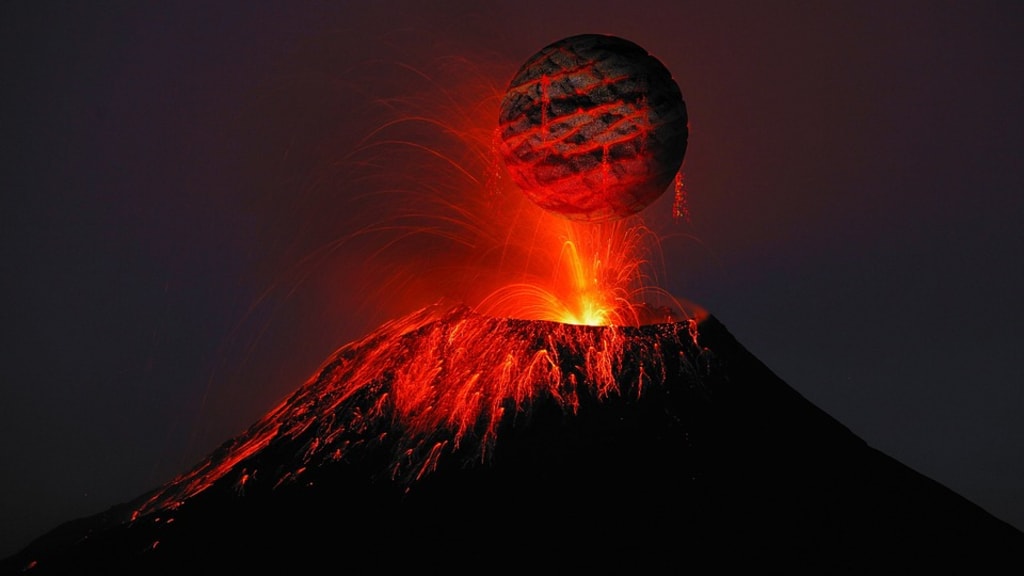The Mount Tambora Eruption and Geoengineering: Exploring Climate Control Solutions for a Changing World
From the 'Year Without a Summer' to Modern Geoengineering: Unveiling Innovative Approaches to Tackle Global Warming

On April 10th, 1815, an extraordinary event took place on the island of Sumbawa, in what is now Indonesia. Mount Tambora, a towering volcano, erupted with a deafening explosion that could be heard over an astonishing distance of 2,000 kilometers (1,200 miles).
The eruption of Mount Tambora holds a significant place in history as one of the most powerful volcanic eruptions ever recorded. Its impact was devastating, wreaking havoc on the surrounding region and leaving a lasting mark on the world.
The sheer force of the eruption caused widespread destruction and loss of life in the immediate vicinity. The booming sound of the explosion echoed across vast distances, serving as a testament to the immense power unleashed by the volcano.
The eruption ejected an enormous volume of volcanic ash, gases, and pyroclastic materials high into the atmosphere. The eruption column soared to an astounding height of approximately 43 kilometers (27 miles). The resulting ash and debris blanketed the land, inflicting further damage and chaos on the affected areas.
Tsunamis, triggered by the eruption, surged towards the coasts, compounding the devastation and claiming many lives. The combined impact of the volcanic ash, tsunamis, and the eruption itself resulted in the tragic deaths of tens of thousands of people.
However, the repercussions of the Mount Tambora eruption extended far beyond the immediate aftermath. The colossal amount of volcanic particles and gases injected into the atmosphere had a profound effect on global climate patterns. A temporary cooling effect ensued, plunging the year 1816 into an unusual cold spell that would become known as the "Year Without a Summer" or "Eighteen Hundred and Froze to Death."
The volcanic aerosols and ash suspended in the air obstructed sunlight, leading to a significant drop in temperatures worldwide. This sudden climate shift had dire consequences, causing widespread crop failures, food shortages, and famine in various parts of the world, particularly in North America and Europe. The repercussions of the eruption's climatic impact reverberated for several years, impacting agriculture, economies, and social conditions on a global scale.
The eruption of Mount Tambora stands as a poignant reminder of the incredible power and global reach of volcanic activity. Scientists have extensively studied this event, as it holds valuable insights into the behavior of volcanoes and their profound influence on climate and human history.
So why do certain contemporary researchers seek ways to recreate it?
Undoubtedly, no one desires to replicate the famine and despair that defined that period. However, some scientists are intrigued by the prospect of employing sulfurous haze to obstruct the sun, with the hope of mitigating the impacts of global warming. This represents just one among numerous concepts encompassed within the realm of geoengineering—a category encompassing intentional, large-scale interventions in Earth's natural systems with the aim of curbing climate change.
Diverse geoengineering proposals target different systems. Any initiatives aimed at cooling the planet by reducing the amount of sunlight reaching the Earth fall under the category of solar radiation management. Certain proposals boast immense scales, such as suggestions to create artificial volcanic plumes or construct an enormous sunshade in Earth's orbit. Others adopt a more focused approach, concentrating on enhancing natural cooling mechanisms. For instance, researchers might explore the expansion of marine clouds or the construction of vast white surfaces to increase Earth's sunlight reflection.
Many of these plans may seem unconventional, to say the least. Nonetheless, there is rationale behind their potential effectiveness, particularly when considering natural occurrences like the Tambora eruption. Scientists acknowledge that volcanic eruptions have historically brought about temporary climate cooling.
Today, scientists are conducting small-scale experiments aimed at safeguarding the Great Barrier Reef by augmenting marine clouds to mitigate further heating and bleaching. The prevailing consensus among researchers is that our primary focus should be on reducing emissions and removing atmospheric CO2.
In many respects, climate change can be viewed as an unintentional geoengineering project, resulting from the cumulative emissions stemming from centuries of fossil fuel combustion. Unless we promptly take action to mitigate emissions and actively remove CO2 from the atmosphere, summers may be forever altered.





Comments
Radha Rangasamy is not accepting comments at the moment
Want to show your support? Send them a one-off tip.